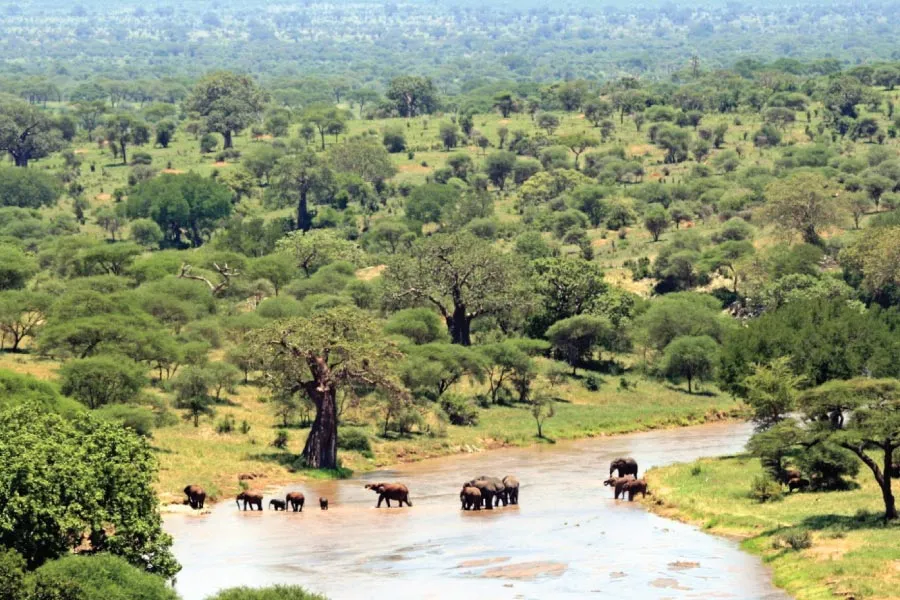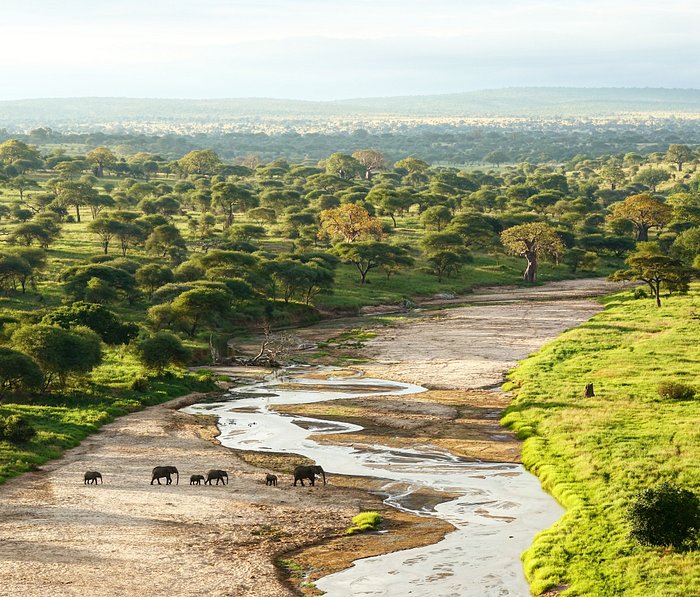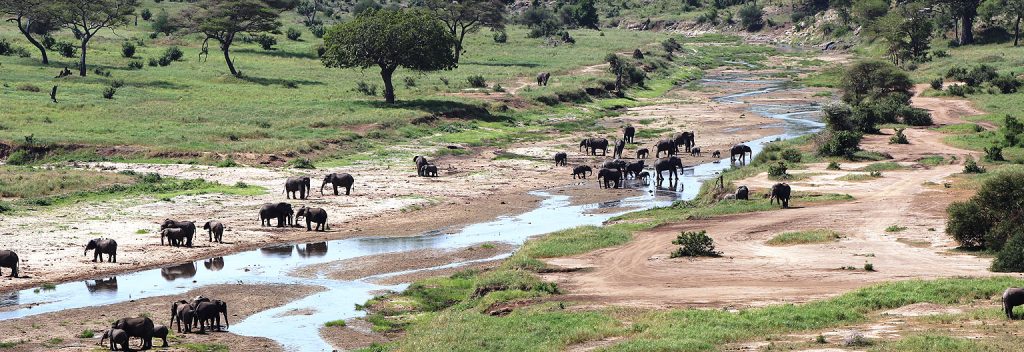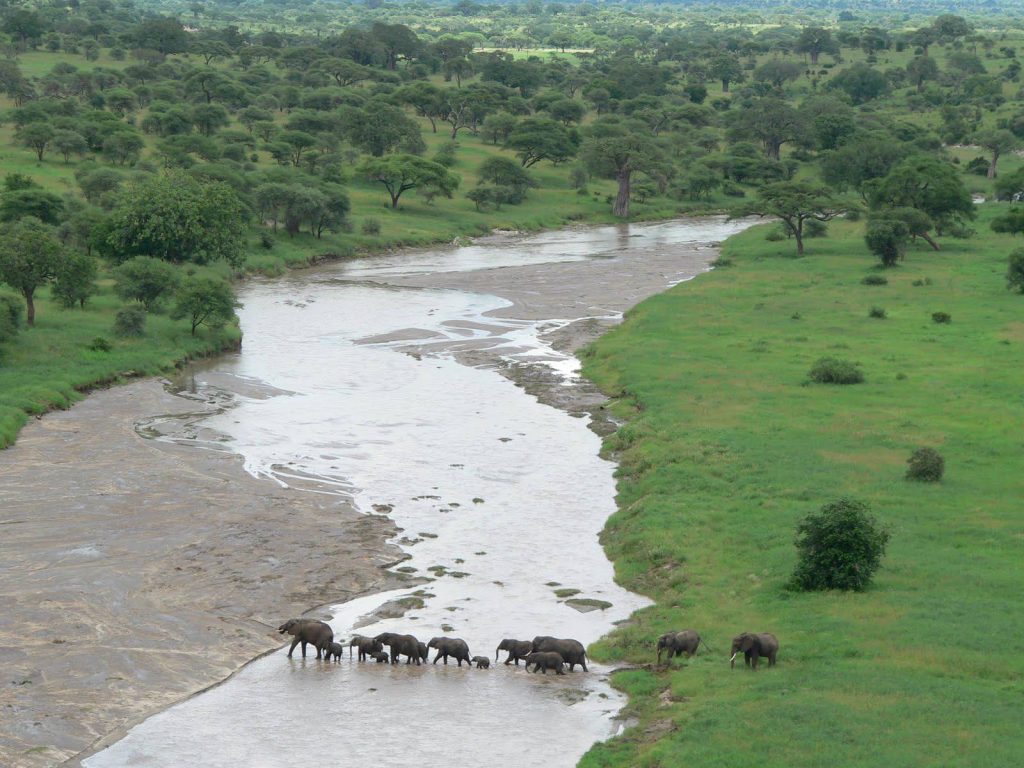The Tarangire River: Lifeblood of the National Park




The Tarangire River is one of the most vital and life-sustaining features of Tarangire National Park. Serving as the park’s main water source, the river is a crucial lifeline for the region’s wildlife, especially during the dry season when other water sources are scarce. Flowing through the park’s expansive savannah and grasslands, the Tarangire River not only nourishes the animals that call the park home but also shapes the dynamics of the ecosystem in ways that make it a key focus of any safari experience. In this article, we’ll explore the importance of the Tarangire River, how it influences the wildlife of the park, and why it is integral to the overall health of the ecosystem.
1. An Overview of the Tarangire River
The Tarangire River is a seasonal river that flows through Tarangire National Park in northern Tanzania. It originates from the many springs in the northern highlands of the park, and during the rainy season, the river experiences a surge of water, swelling and enriching the land around it. However, as the dry season progresses, the river’s flow diminishes, leaving behind several waterholes that continue to provide critical sustenance for animals, making it an important seasonal water source. This flow is irregular, but even when the riverbed dries up, the underground reservoirs and waterholes remain essential.
The river meanders through the park’s landscape, providing a diverse habitat for many species and contributing to the park’s reputation as one of the best wildlife destinations in East Africa.
2. The Tarangire River: A Lifeline During the Dry Season
Perhaps the most important role of the Tarangire River is that it provides a reliable source of water for wildlife, especially during the dry season. The dry season in Tarangire runs from June to October, and it is during these months that the Tarangire River truly shines as a life-giving force. Many animals from across the park converge near the river for sustenance, making it a prime spot for wildlife viewing.
During the dry months, the landscape around the river becomes a hotspot for large concentrations of animals, including elephants, buffaloes, zebras, and wildebeests. They all gather at the river’s waterholes in search of hydration, creating dramatic scenes of animal interaction. Predators such as lions and leopards are also drawn to the river, as they know the animals that come to drink are vulnerable. This natural cycle makes the Tarangire River not just a water source, but also an arena for the survival struggles of the park’s wildlife.
3. Supporting a Rich Biodiversity
The Tarangire River plays a crucial role in supporting the rich biodiversity that Tarangire National Park is known for. Its waters are not only essential to large mammals but also create favorable conditions for a wide variety of birds, reptiles, and smaller mammals.
Birdlife thrives along the river, particularly in the wet season when migratory birds make their stop in Tarangire. Species like the African fish eagle, white-headed vulture, and secretary bird can often be seen hunting around the river, taking advantage of the abundant food source. The river also creates an ideal habitat for many waterfowl, including ducks and herons, as well as larger birds like the kori bustard and ostrich, which frequent the plains near the river.
Reptiles, including crocodiles, are found in the deeper parts of the Tarangire River. Crocodiles make use of the slow-moving waters to rest and hunt, while monitor lizards, frogs, and snakes are often found around the riverbanks, making the area a critical zone for biodiversity.
4. The Tarangire River’s Role in Animal Movement and Migration
In addition to providing water, the Tarangire River also influences the movement and behavior of animals within Tarangire National Park. The river serves as a central point for wildlife to travel toward during the dry season, leading many species to congregate around the river’s waterholes.
This natural concentration of wildlife creates opportunities for visitors to witness unique interactions. In the rainy season, animals spread out across the park in search of fresh grazing, but during the dry months, the Tarangire River becomes a central meeting point for elephants, buffaloes, giraffes, and antelopes. The migration patterns of these species are intricately linked to the river, making it a vital feature in their survival and movement patterns.
5. The Impact of the Tarangire River on Safari Experiences
For visitors to Tarangire National Park, the Tarangire River provides a dynamic and exciting element to the safari experience. Game drives along the river’s edge are some of the best opportunities for spotting animals, as the animals congregate at the waterholes to drink, bathe, and socialize. Safari guides often take advantage of the river’s seasonal patterns to lead guests to the best spots for viewing wildlife.
The presence of the river makes it a popular area for both daytime and evening game drives. Many safari-goers prefer to witness the scene when large herds of elephants gather at the river during the hot hours of the day, taking a drink and cooling off in the shade. These moments provide unforgettable photographic opportunities.
6. The River’s Role in Conservation
As with many of the natural elements in Tarangire National Park, the Tarangire River plays an integral role in the ongoing conservation efforts within the park. Conservationists recognize the importance of protecting the river and its surrounding ecosystem, as it sustains a large number of species throughout the year.
The health of the Tarangire River directly influences the health of the park’s wildlife. Any changes to the river’s flow due to human interference or climate change could have a detrimental effect on the entire ecosystem. Conservation efforts in Tarangire include protecting the river and its natural water flow while educating visitors about the delicate balance of the region’s biodiversity.
7. How to Experience the Tarangire River on Safari
To fully appreciate the significance of the Tarangire River, visitors can embark on a game drive or a walking safari with an experienced guide. Early morning and late afternoon game drives along the river are prime times for spotting animals, especially as the temperature rises and the animals come to drink.
For a more immersive experience, some lodges and camps near the river offer bush dinners and sundowner experiences, where visitors can relax and watch the wildlife from a distance. These unique experiences allow guests to appreciate the river and its surrounding landscape in the most intimate way possible.
8. Conclusion: The Lifeblood of Tarangire
The Tarangire River is far more than just a water source— it is the lifeblood of Tarangire National Park. From its role in supporting a wide array of wildlife, to its influence on migration patterns, the river is a crucial part of the park’s ecosystem and the overall safari experience. Whether you’re watching herds of elephants drink from its banks or observing the birds hunting near its waters, the Tarangire River is a constant reminder of the interdependent relationships that sustain life in this extraordinary national park. For anyone visiting Tarangire, a stop by the river is a must to understand the true heart of the park.

One Comment